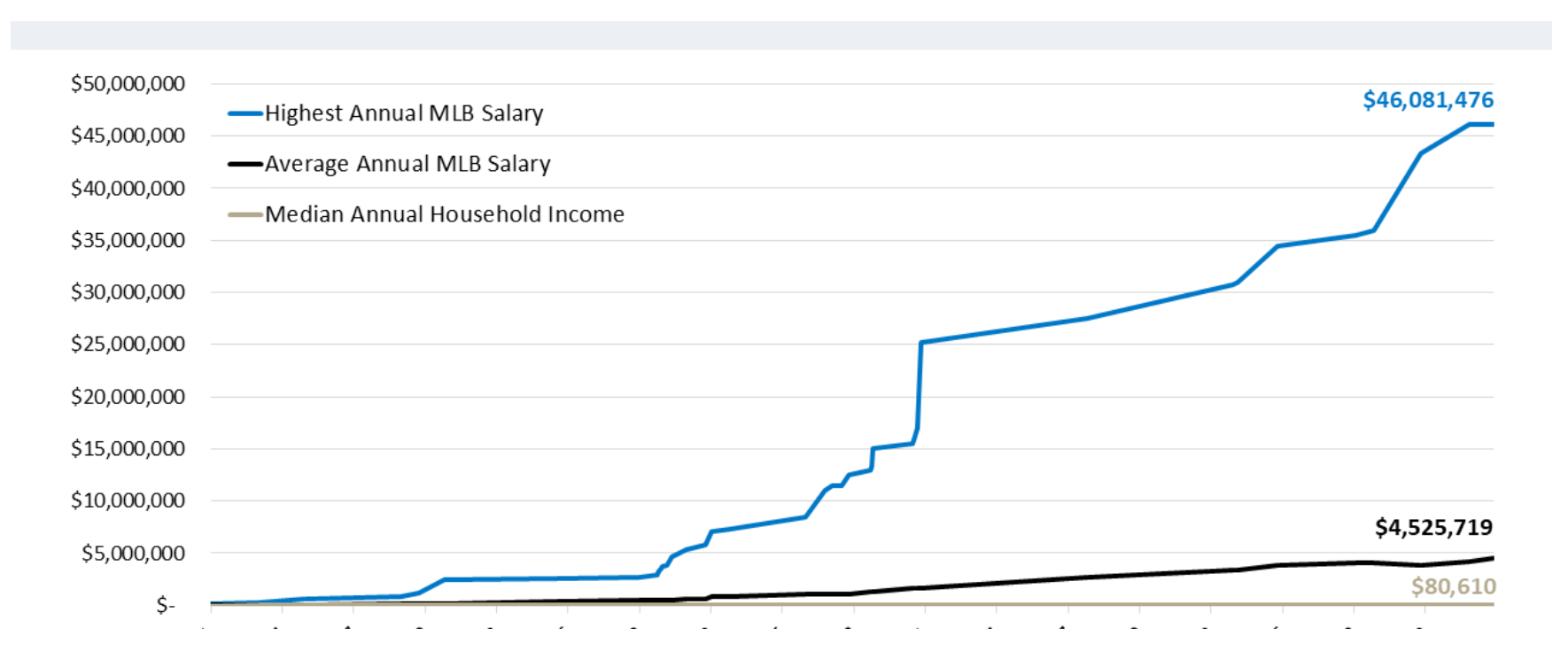
Written By: DoubleLine
“Whoever wants to know the heart and mind of America had better learn baseball.” ~ Jacques Barzun
It’s late March, and Major League Baseball (MLB) Opening Day is this week. While fans celebrate the return of baseball, conversations about money in the sport are also back in full swing.
This offseason, Juan Soto signed a record-setting 15-year, $765 million deal with the New York Mets, eclipsing Shohei Ohtani’s $700 million Los Angeles Dodgers contract in 2023 and Aaron Judge’s $360 million deal in 2022 with the New York Yankees. As salaries hit unprecedented highs, how do these numbers compare to those of the average American worker?
The Exploding Gap: MLB’s Elite vs. the American Worker
Our chart comparing top MLB salaries to the average American wage over five decades shows a striking disparity: While baseball’s stars have seen their pay soar, median incomes for American workers have grown far more slowly.
- In 1971, the average MLB player earned 3.49 times the median U.S. household income.
- By 2023, that multiple had exploded to 56.
- Carl Yastrzemski earned the top salary in 1971: $166,667 (about $1.3 million today).
- In 2023, Ohtani’s annual salary hit $46 million – over 35 times more than Yastrzemski’s inflation-adjusted figure.
Meanwhile, for the average American worker:
- The median U.S. household income was $9,028 in 1971 (about $69,000 today).
- By 2023, it had increased to $80,610 – an 8.9x nominal gain. Adjusted for inflation, that’s just a 20% total increase over 52 years – about 0.3% per year.
The Economics of Rarity: Why Have Baseball’s Biggest Paychecks Grown So Much Faster?
The extreme divergence reflects broader economic forces. The market rewards scarcity, and elite talent is rare. While the gap in skill between an average MLB player and a superstar might be relatively small, the economic value of transcendent ability – like Ohtani’s – commands a massive premium. Like a rare Picasso, a singular baseball talent commands a price tag far beyond the merely good.
Globalization has amplified this. MLB’s audience is now global, and stars like Ohtani generate revenue far beyond ticket sales, driving international deals and merchandise sales. A global fan base elevates top salaries even higher.
Meanwhile, middle-class wages in the U.S. have stagnated. Globalization, automation and declining union power have curbed wage growth, even as worker productivity has increased. Unlike top MLB salaries, the commodification of many middle-class jobs has led to slow real income growth. The same economic forces that have made baseball’s highest-paid stars wealthier than ever have also contributed to widening the income gap across industries in America.
Conclusion: More Than Just a Game
Baseball has long mirrored American society – and few contrasts are as stark as the soaring pay of its biggest stars versus the stagnant wages of the average worker.
The sport’s wealth curve – a steep trajectory where gains are concentrated at the top – mirrors the broader economic pattern unfolding across the country. Just as a handful of players now command hundreds of millions, the U.S. economy has delivered explosive gains for a few while many fall behind.
Baseball doesn’t just entertain – it charts the shifting shape of opportunity and reward in modern America. These compensation patterns offer more than insight into a sport, they reflect the economic pulse of a nation. Baseball may be a game – but its paychecks tell the story of a nation.
Related: Unpacking My Suitcase: The Fed, Policy, and International Markets

